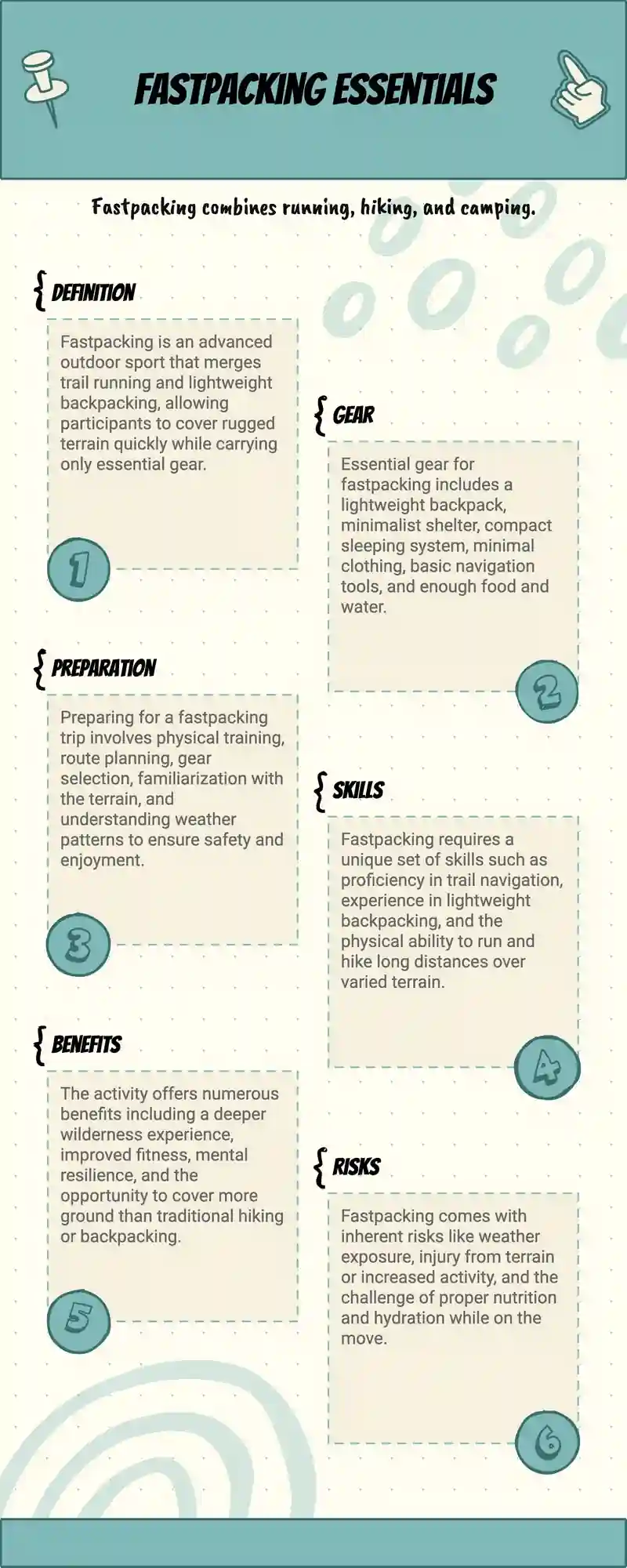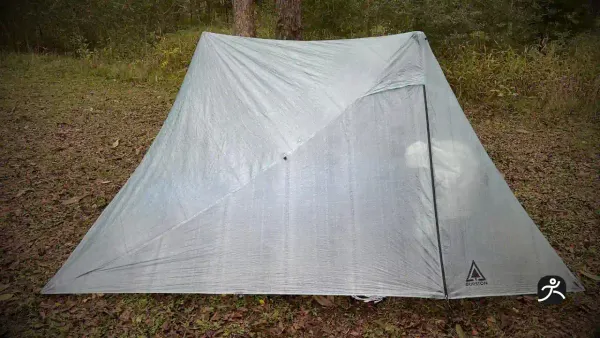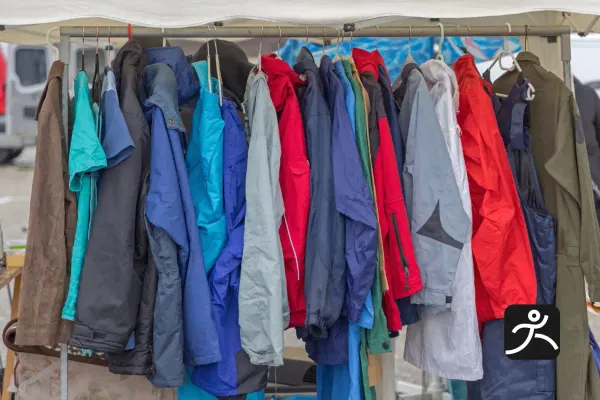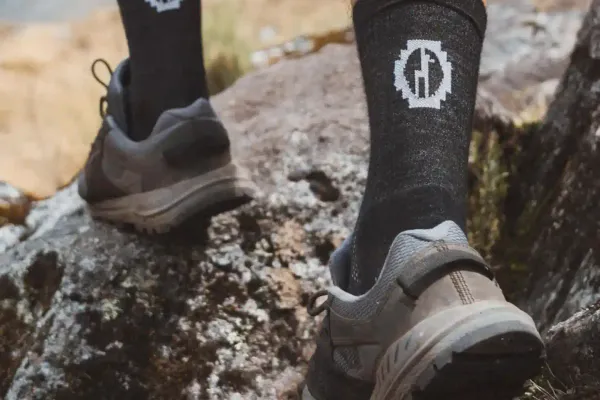Blaze Trails and Push Limits: Discover the Art of Fastpacking
Packing light and moving fast: discover fastpacking, the thrilling blend of backpacking and trail running that's revolutionizing outdoor adventure—but how do you begin?

For those like me who hadn't heard of the "fastpacking" term and the world it has evolved into my find it to be intriguing as it is a hybrid of trail running and backpacking covering the best of both worlds into one activity.
The focus of fastpacking is to cover more ground in less time while still being able to take in nature. The pack part comes with the power to elongate trips into several days making trips of 20 miles to 100 miles viable fully self supported.
Don't get me wrong, this is a hard challenge that will push you to your limits but it will provide you an outdoor adventure and experience that very few ever get to have.
But prior you set out on the trails with your pack, there's a lot to think through and plan to make a trip safe. From essential gear to route planning, nutrition strategies to safety precautions, fastpacking requires careful preparation.
What is Fastpacking? A Blend of Speed and Self-Sufficiency
Fastpacking blends the speed and movement of trail running with the self-sufficiency of ultralight backpacking, allowing you to cover long distances in the wilderness with minimal gear.
You'll carry a fastpacking pack weighing less than 15 pounds, filled with lightweight gear and a compact sleeping system. This minimalist approach lets you move swiftly through backcountry terrain.
Fastpacking isn't just about speed; it's a mindset. It's about challenging yourself, simplifying your needs, and reconnecting with the wilderness.
Gearing Up: Essential Equipment for Fastpacking Success
When you're preparing and gearing for your fastpacking trip, you'll need to zero in on the essentials to keep you light on your feet while also safe in the wilderness.
Your pack is your lifeline, so choose a lightweight but durable one that hugs your body like a second skin, personally I use the Outdoor Vitals Skyline 30L Fastpack as its solid material and comfortable vest mean no movement on my body.
Trail running shoes are your best friends; they'll carry you over rough terrain with ease. I use Altra Lone Peaks, but shoes are very much a personal preference so you could look to others to find the right match.
Don't forget your cozy, compact sleeping system – it's your ticket to a good night's rest under the stars. These may adjust based on the season and expected weather, many will cowboy camp or use a bivy to be as compact and light as possible.
As to clothing, some prefer pants and others will choose shorts but in either case the clothing chosen needs to stay comfortable wet and dry and not promote chafing or you'll be in for a world of hurt.
A portable stove and water purification system are non-negotiables; they'll keep you fueled and hydrated on those long days.
Safety first in the backcountry and always pack your first aid kit – you never know when you might need this gear to save your life or someone else's.
Mapping Your Journey: Route Planning and Preparation

When planning your fastpacking route, you'll need to start by thoroughly researching current trail conditions to make sure you're prepared for whatever lies ahead.
A key here is to take into account all water sources along the way and whether they are expected to be running or not, as staying hydrated is essential for any trek.
Research Trail Conditions
There are four key steps to guarantee you're well-prepared for your adventure: researching trail conditions, checking trail and weather reports, consulting rangers, and lastly mapping your route.
Don't skimp on this essential prep work!
Dig in and immerse yourself in trail reports and trail videos like they're the latest bestseller, absorbing every detail about the path. You'll thank yourself later when you're not face-to-face with an unexpected river crossing!
Next, if possible reach out to the local ranger stations for the trail. These folks have troves of insider knowledge about trail conditions, weather conditions, and water sources. They've seen it all, and their insights are invaluable for route planning.
Consider Water Sources
As you map out your fastpacking route, it's crucial to pinpoint reliable water sources to keep yourself hydrated without lugging unnecessary water weight between sources. This is a game-changer to moving faster!
Consider the distance between water sources as well as seasonal variations in water availability to fine-tune your hydration strategy. Don't be shy – consult experienced fastpackers or local guides for insider tips on the best spots to quench your thirst.
Here's a handy table to help you plan:
| Water Source | Reliability | Purification Needed |
|---|---|---|
| Rivers | High | Yes |
| Springs | Moderate | Usually |
| Lakes | High | Yes |
Set Daily Mileage Goals
Now that you've got your water sources sorted, it's time to map out your expected daily mileage goals for your next adventure. When planning your route, consider your fitness level and the terrain you'll be tackling.
Factor in water availability and camping regulations to set realistic goals. To make your planning process a breeze, follow these steps:
- Spread out your map and trace your intended route with your finger
- Visualize yourself demolishing the challenging climbs and cruising through gentle valleys
- Think about the satisfaction of reaching each day's destination, tired but exhilarated and ready to relax and recharge
- Lastly, picture yourself setting up camp under a starry sky allowing you to reflect on the day's adventures
Fueling Your Adventure: Nutrition and Hydration Strategies

When it comes to fastpacking, you'll need to master packing efficient nutrition and hydration to keep your energy levels high and your pack weight low. It's all about finding that sweet spot between fueling your adventure and not weighing yourself down.
Pack compact, nutrient-dense foods like instant coffee, oatmeal, and jerky to keep your energy up without bulking up your pack. You'll thank yourself for choosing calorie-dense options when you're tackling those tough miles!
Don't forget to stay hydrated as this is essential for maintaining your stamina.
Keep your daily food accessible in vest pockets if possible and organize the rest in Ziploc bags for easy access.
Staying Safe: Critical Considerations for Fastpackers
When you're starting out for your fastpacking trek, maintaining personal safety is a crucial priority. You'll want to pack essential safety gear, carefully plan your route, and prepare for potential emergencies.
Essential Safety Gear
Safety's paramount when you're fastpacking, and you'll need to pack essential gear to make sure you're prepared for emergencies in remote areas. Don't skimp on safety gear like signaling tools, and reliable communication devices.
When you're out there, be aware of wildlife and always check those weather forecasts. Know your personal limits, too – there's no shame in turning back if conditions get dicey. Here's a quick list of must-haves:
- First aid kit (bandages, antiseptic, pain relievers)
- Blister Kit (Needle, Leukotape)
- Signaling tools (whistle, mirror, bright-colored fabric)
- Communication device (satellite phone or GPS messenger)
Route Planning Precautions
Ensuring your fastpacking route won't lead you into bad situations requires taking precautions during your planning phase. First and foremost, do your homework! Research current trail reports and chat with local rangers about route conditions.
Trust me when I say that their insights are gold for someone looking to move through the area safely!
Then you MUST keep a close eye on weather forecasts and water availability – Mother Nature can be unpredictable, and you don't want any nasty surprises. When plotting your daily distances, be honest about your fitness level and the terrain you'll encounter. There's no shame in taking it easy, folks!
Oh, and here's a pro tip: consult with seasoned fastpackers for their trail-tested wisdom. Lastly, always have backup route options up your sleeve. You never know when an unexpected obstacle or emergency might throw a wrench in your plans.
Stay safe out there, adventure seekers!
Emergency Preparedness Strategies
Your fastpacking adventure's success may hinge on solid emergency preparedness strategies that'll keep you safe. Before you hit the trails, make sure you've got a well-stocked first aid kit and share your itinerary with a trusted friend.
Stay informed about local wildlife and weather conditions, and don't hesitate to turn back if things get dicey. Remember, understanding your limits is essential for a safe and enjoyable experience.
To really paint a picture of emergency preparedness, imagine:
- Packing a compact, waterproof first aid kit with essentials like bandages, antiseptic wipes, and pain relievers
- Studying a detailed map of your route, marking potential escape routes and safe zones
- Checking multiple weather forecasts and packing appropriate gear for sudden changes
- Practicing emergency scenarios with your fastpacking buddies, like treating a sprained ankle or setting up an emergency shelter
Training for the Challenge: Building Endurance and Skills

To excel in fastpacking you'll need to focus on five key areas of training: endurance, strength, mental resilience, power hiking, and recovery.
Start by building your endurance through trail running and power hiking, pushing yourself to cover longer distances on varied terrain. Don't neglect strength training; it's essential for handling the demands of fastpacking.
Mental resilience is your secret weapon – cultivate it through challenging yourself and embracing discomfort. Practice power hiking to become more efficient and speedy on the trails.
Choosing Your Crew: The Importance of Compatible Companions
Selecting the right crew or companions for fastpacking can help or hinder you so it's vital to choose them wisely. When picking your fastpacking companions, consider their fitness levels, ultralight backpacking experience, and trail running abilities. You want to create a group dynamic that's supportive, motivating, and vital. Remember, you'll be facing challenging terrain together, so teamwork is essential!
To help you envision the perfect fastpacking crew, imagine:
- The early bird who's always ready with a steaming cup of coffee at dawn
- The navigation whiz who effortlessly guides you through tricky switchbacks
- The gear guru who's got a solution for every ultralight packing dilemma
- The positive powerhouse who keeps spirits high during tough climbs

Treading Lightly: Environmental Responsibility in Fastpacking
As you begin it's vital to contemplate the environmental impact of your journey and adhere to proper trail etiquette. Embracing lightweight gear isn't just about speed; it's a commitment to treading lightly on our precious natural habitats.
Stick to designated trails, folks – it's not just considerate, it's imperative for preserving delicate ecosystems. Leave No Trace principles aren't just fancy words. Pack it in, pack it out, and leave that stunning vista as pristine as you found it.
And hey, while you're zipping along, keep an eye out for our furry and feathered friends. Respecting wildlife means giving them space and admiring from afar.





